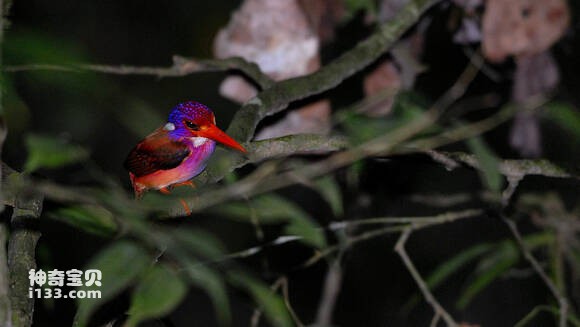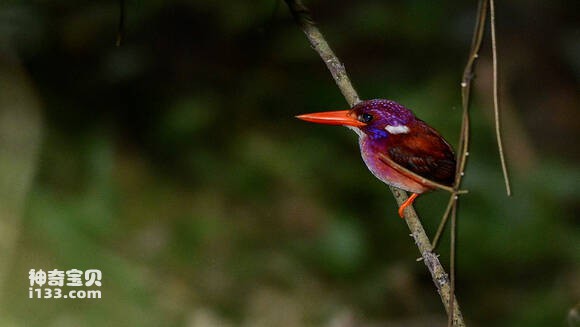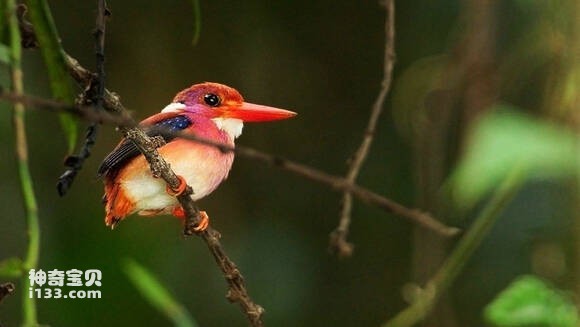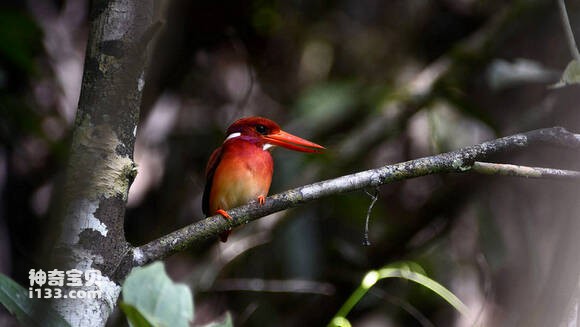Ceyx melanurus
IUCN
LCBasic Information
Scientific classification
- name:Ceyx melanurus
- Scientific Name:Ceyx melanurus,Philippine Dwarf-kingfisher
- Outline:Climbing birds
- Family:
Vital signs
- length:No textual research information is available
- Weight:No textual research information is available
- lifetime:No textual research information is available
Feature
It is a small forest kingfisher with a very bright color
Distribution and Habitat
The Philippine three-toed kingfisher is found in the Pacific islands (including the Philippines, Brunei, Malaysia, Singapore, Indonesia's Sumatra, Java, and Papua New Guinea).
The Philippine three-toed kingfisher usually inhabits dense forests and riverbanks near water.
Appearance
The head, forehead, neck, breast and back of the Philippine three-toed kingfisher are orange-red; A long white spot on each side of the nape of the neck; The wings are grayish-brown, with a dark blue margin at the tip of the feather; Lower body waist, abdomen white, tail feathers orange-red; Chin throat white; Purplish red ear feathers, reflective; The undertail cover is deeper. All parts of the bird are colorful. Iris brown; Red mouth and feet.
Only 3 digits; Tail shorter than mouth; Airfoil tip length; Feather color is not black and white. Mouth thick straight, long and firm, mouth ridge round; No nasal furrow; The wingtip is long, the first primary feathers are slightly shorter, and the third and fourth feathers are longest; Tail short round; The body feathers are showy and luminous, often blue or green.
Details
Ceyx melanurus, Philippine Dwarf kingfisher, has three subspecies (1.Ceyx melanurus melanurus is found in Luzon, Polynesia, Arabat, and Catanduones in the Philippines). 2.Ceyx melanurus samarensis is distributed in Samar and Leyte Islands in the Philippines. 3.Ceyx melanurus mindanensis is found in Mindanao and Basilan in the Philippines.) .

The Philippine three-toed kingfisher usually hunts alone or in pairs. Like most forest kingfishers, they are completely carnivorous. Often searching for prey in leaves or dirt. The main food is insects, such as crickets, spiders, scorpions, and snails. They also eat a variety of aquatic animals. Although they are often near the water and bathe in the water, they do not fish, but sometimes catch small frogs.
The Philippine three-toed kingfisher usually nests on earth cliffs or river levees, using its beak to dig tunnle-like burrows, which are generally not covered with bedding. The eggs are laid directly on the nest ground. Some also drill holes in tree trunks for nests.

Listed in the International Union for Conservation of Nature (IUCN) ver 3.1:2008 Red List of Birds - Vulnerable (VU).

Protect wild animals and eliminate wild meat.
Maintaining ecological balance is everyone's responsibility!








